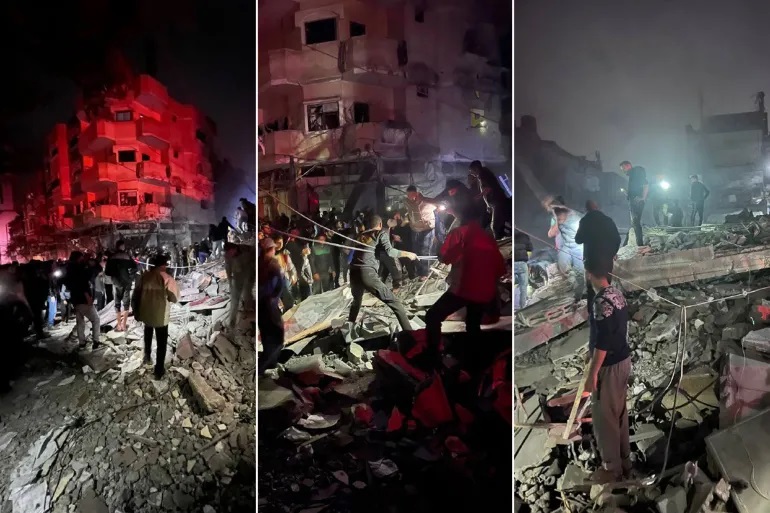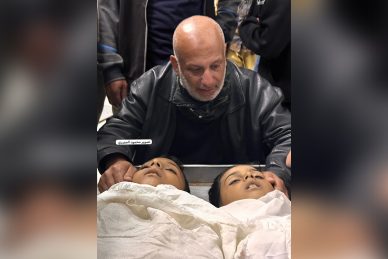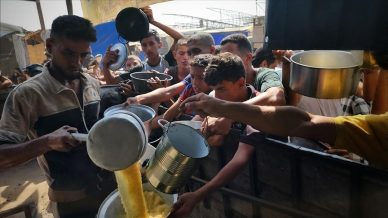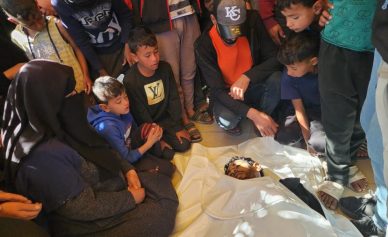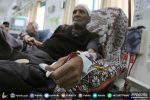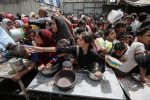GAZA, (PIC)
The Nuseirat refugee camp, located in central Gaza, has witnessed a series of devastating events since the June 2024 massacre. Once a relatively peaceful area, it has become a theater of destruction due to Israeli airstrikes, artillery shelling, and ground incursions, leaving dozens dead, infrastructure in ruins, and the population in dire conditions.
Nuseirat, the third-largest refugee camp in Gaza, had been regarded in recent years as a microcosm of Gaza’s urban and infrastructural development over the past 15 years. Its residents, however, are now struggling to comprehend the scale of the destruction and the horrific crimes that have obliterated entire families.
A series of tragic events
Two months prior to the June massacre, on April 8, Israeli forces launched a ten-day military operation targeting the New Nuseirat area. The assault led to the destruction of 14 residential towers known as the Salhi Towers, dozens of other buildings, and significant damage to civilian and agricultural infrastructure.
This brutal operation resulted in 520 casualties, including 75 fatalities and 348 injuries, according to the Government Media Office (GMO). Another 100 individuals were reported missing.
On June 8, Israeli forces carried out 250 airstrikes on Nuseirat in an operation aimed at freeing four Israeli captives. The attack killed 274 Palestinians and injured over 400. While Israel claimed success in rescuing the captives, Palestinian resistance forces stated that three of them were killed during the operation.
Since then, Nuseirat has endured near-daily bombardment. Large sections of its northern and eastern areas have come under heavy fire, with wide swaths of the camp effectively cut off.
Civilian centers under fire
Two days before the June massacre, an Israeli airstrike targeted the Sardy School in Nuseirat, killing 40 Palestinians, including women and children.
On July 6, another airstrike hit Abu Ariban School, which housed nearly 7,000 displaced people, resulting in 12 deaths and 75 injuries. Later that month, on July 30, another 12 people were killed in an airstrike on a gathering near the camp’s entrance.
In mid-August, Israeli forces targeted homes and shelters in Nuseirat. A strike on a house in the western part of the camp killed seven Palestinians, including three children, while another attack on Ezz Bin Abdul Salam School—housing displaced people—left multiple casualties.
The situation worsened in September when Israeli attacks intensified, targeting United Nations facilities and personnel. On September 11, the UN Relief and Works Agency (UNRWA) reported the death of six staff members in two airstrikes—the agency’s highest loss in a single incident since the start of the war.
A war on civilians
Throughout the fall, Israeli forces expanded their focus on shelters, accusing them of harboring resistance leaders. On September 23, an airstrike on Khaled Bin Al-Walid School, which housed displaced families, killed three people. Days earlier, nine others, including children and women, died in a similar attack on a home in western Nuseirat.
By the end of September, shelling in Nuseirat and the nearby Maghazi camp killed four more people. The following month, over 25 Palestinians, mostly women and children, were killed in airstrikes targeting homes. By October’s end, over 70 people had been killed, with hundreds injured, prompting mass displacements under increasingly challenging conditions.
Systematic destruction
The violence escalated further in November. Israeli forces struck schools, homes, and water infrastructure, leaving devastation in their wake. A November 21 strike on the camp’s main water distribution station cut off water for much of the population. Days later, an UNRWA administrative building sheltering displaced families was bombed, resulting in additional deaths and injuries.
By November’s end, more than 90 people had been killed, including 30 children and 15 women, with hundreds injured. December brought more tragedy as Israeli forces bombarded densely populated areas, including residential towers and civilian shelters.
A call for justice
The GMO described the atrocities in Nuseirat, particularly the New Nuseirat camp, as part of a systematic campaign of genocide, forced displacement, and indiscriminate destruction targeting civilians. It called on the international community to condemn Israeli crimes and hold those responsible accountable.
It also blamed Israel, alongside the United States and its allies such as Britain, Germany, and France, for enabling the ongoing genocide in Gaza.
Despite these calls, Israel, with full U.S. support, has continued its campaign in Gaza since October 7, 2023 resulting in over 153,000 Palestinian casualties, including tens of thousands of missing persons, and widespread devastation. The humanitarian crisis in Gaza remains dire, with urgent international intervention needed to protect civilians and halt the atrocities.

